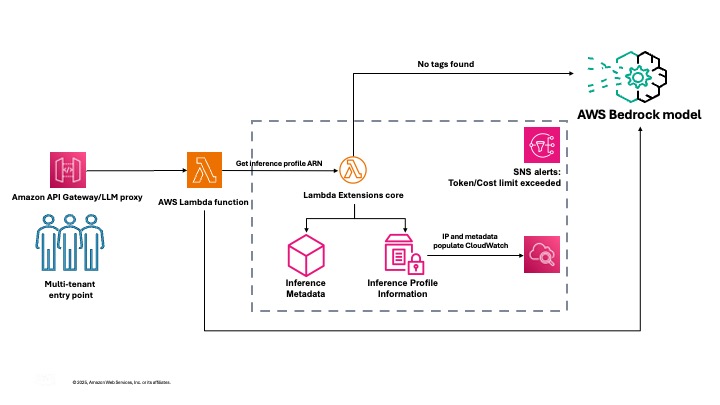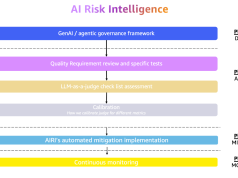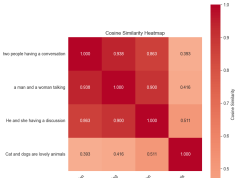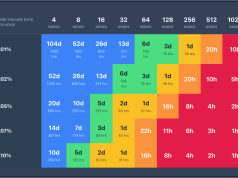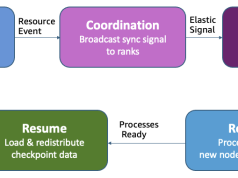Successful generative AI software as a service (SaaS) systems require a balance between service scalability and cost management. This becomes critical when building a multi-tenant generative AI service designed to serve a large, diverse customer base while maintaining rigorous cost controls and comprehensive usage monitoring.
Traditional cost management approaches for such systems often reveal limitations. Operations teams encounter challenges in accurately attributing costs across individual tenants, particularly when usage patterns demonstrate extreme variability. Enterprise clients might have different consumption behaviors—some experiencing sudden usage spikes during peak periods, whereas others maintain consistent resource consumption patterns.
A robust solution requires a context-driven, multi-tiered alerting system that exceeds conventional monitoring standards. By implementing graduated alert levels—from green (normal operations) to red (critical interventions)—systems can develop intelligent, automated responses that dynamically adapt to evolving usage patterns. This approach enables proactive resource management, precise cost allocation, and rapid, targeted interventions that help prevent potential financial overruns.
The breaking point often comes when you experience significant cost overruns. These overruns aren’t due to a single factor but rather a combination of multiple enterprise tenants increasing their usage while your monitoring systems fail to catch the trend early enough. Your existing alerting system might only provide binary notifications—either everything is fine or there’s a problem—that lack the nuanced, multi-level approach needed for proactive cost management. The situation is further complicated by a tiered pricing model, where different customers have varying SLA commitments and usage quotas. Without a sophisticated alerting system that can differentiate between normal usage spikes and genuine problems, your operations team might find itself constantly taking reactive measures rather than proactive ones.
This post explores how to implement a robust monitoring solution for multi-tenant AI deployments using a feature of Amazon Bedrock called application inference profiles. We demonstrate how to create a system that enables granular usage tracking, accurate cost allocation, and dynamic resource management across complex multi-tenant environments.
What are application inference profiles?
Application inference profiles in Amazon Bedrock enable granular cost tracking across your deployments. You can associate metadata with each inference request, creating a logical separation between different applications, teams, or customers accessing your foundation models (FMs). By implementing a consistent tagging strategy with application inference profiles, you can systematically track which tenant is responsible for each API call and the corresponding consumption.
For example, you can define key-value pair tags such as TenantID, business-unit, or ApplicationID and send these tags with each request to partition your usage data. You can also send the application inference profile ID with your request. When combined with AWS resource tagging, these tag-enabled profiles provide visibility into the utilization of Amazon Bedrock models. This tagging approach introduces accurate chargeback mechanisms to help you allocate costs proportionally based on actual usage rather than arbitrary distribution approaches. To attach tags to the inference profile, see Tagging Amazon Bedrock resources and Organizing and tracking costs using AWS cost allocation tags. Furthermore, you can use application inference profiles to identify optimization opportunities specific to each tenant, helping you implement targeted improvements for the greatest impact to both performance and cost-efficiency.
Solution overview
Imagine a scenario where an organization has multiple tenants, each with their respective generative AI applications using Amazon Bedrock models. To demonstrate multi-tenant cost management, we provide a sample, ready-to-deploy solution on GitHub. It deploys two tenants with two applications, each within a single AWS Region. The solution uses application inference profiles for cost tracking, Amazon Simple Notification Service (Amazon SNS) for notifications, and Amazon CloudWatch to produce tenant-specific dashboards. You can modify the source code of the solution to suit your needs.
The following diagram illustrates the solution architecture.

The solution handles the complexities of collecting and aggregating usage data across tenants, storing historical metrics for trend analysis, and presenting actionable insights through intuitive dashboards. This solution provides the visibility and control needed to manage your Amazon Bedrock costs while maintaining the flexibility to customize components to match your specific organizational requirements.
In the following sections, we walk through the steps to deploy the solution.
Prerequisites
Before setting up the project, you must have the following prerequisites:
- AWS account – An active AWS account with permissions to create and manage resources such as Lambda functions, API Gateway endpoints, CloudWatch dashboards, and SNS alerts
- Python environment – Python 3.12 or higher installed on your local machine
- Virtual environment – It’s recommended to use a virtual environment to manage project dependencies
Create the virtual environment
The first step is to clone the GitHub repo or copy the code into a new project to create the virtual environment.

Update models.json
Review and update the models.json file to reflect the correct input and output token pricing based on your organization’s contract, or use the default settings. Verifying you have the right data at this stage is critical for accurate cost tracking.

Update config.json
Modify config.json to define the profiles you want to set up for cost tracking. Each profile can have multiple key-value pairs for tags. For every profile, each tag key must be unique, and each tag key can have only one value. Each incoming request should contain these tags or the profile name as HTTP headers at runtime.
As part of the solution, you also configure a unique Amazon Simple Storage Service (Amazon S3) bucket for saving configuration artifacts and an admin email alias that will receive alerts when a particular threshold is breached.

Create user roles and deploy solution resources
After you modify config.json and models.json, run the following command in the terminal to create the assets, including the user roles:
python setup.py --create-user-rolesAlternately, you can create the assets without creating user roles by running the following command:
python setup.pyMake sure that you are executing this command from the project directory. Note that full access policies are not advised for production use cases.
The setup command triggers the process of creating the inference profiles, building a CloudWatch dashboard to capture the metrics for each profile, deploying the inference Lambda function that executes the Amazon Bedrock Converse API and extracts the inference metadata and metrics related to the inference profile, sets up the SNS alerts, and finally creates the API Gateway endpoint to invoke the Lambda function.
When the setup is complete, you will see the inference profile IDs and API Gateway ID listed in the config.json file. (The API Gateway ID will also be listed in the final part of the output in the terminal)

When the API is live and inferences are invoked from it, the CloudWatch dashboard will show cost tracking. If you experience significant traffic, the alarms will trigger an SNS alert email.

For a video version of this walkthrough, refer to Track, Allocate, and Manage your Generative AI cost & usage with Amazon Bedrock.
You are now ready to use Amazon Bedrock models with this cost management solution. Make sure that you are using the API Gateway endpoint to consume these models and send the requests with the tags or application inference profile IDs as headers, which you provided in the config.json file. This solution will automatically log the invocations and track costs for your application on a per-tenant basis.
Alarms and dashboards
The solution creates the following alarms and dashboards:
- BedrockTokenCostAlarm-{profile_name} – Alert when total token cost for {profile_name} exceeds {cost_threshold} in 5 minutes
- BedrockTokensPerMinuteAlarm-{profile_name} – Alert when tokens per minute for {profile_name} exceed {tokens_per_min_threshold}
- BedrockRequestsPerMinuteAlarm-{profile_name} – Alert when requests per minute for {profile_name} exceed {requests_per_min_threshold}
You can monitor and receive alerts about your AWS resources and applications across multiple Regions.
A metric alarm has the following possible states:
- OK – The metric or expression is within the defined threshold
- ALARM – The metric or expression is outside of the defined threshold
- INSUFFICIENT_DATA – The alarm has just started, the metric is not available, or not enough data is available for the metric to determine the alarm state
After you add an alarm to a dashboard, the alarm turns gray when it’s in the INSUFFICIENT_DATA state and red when it’s in the ALARM state. The alarm is shown with no color when it’s in the OK state.
An alarm invokes actions only when the alarm changes state from OK to ALARM. In this solution, an email is sent to through your SNS subscription to an admin as specified in your config.json file. You can specify additional actions when the alarm changes state between OK, ALARM, and INSUFFICIENT_DATA.
Considerations
Although the API Gateway maximum integration timeout (30 seconds) is lower than the Lambda timeout (15 minutes), long-running model inference calls might be cut off by API Gateway. Lambda and Amazon Bedrock enforce strict payload and token size limits, so make sure your requests and responses fit within these boundaries. For example, the maximum payload size is 6 MB for synchronous Lambda invocations and the combined request line and header values can’t exceed 10,240 bytes for API Gateway payloads. If your workload can work within these limits, you will be able to use this solution.
Clean up
To delete your assets, run the following command:
python unsetup.pyConclusion
In this post, we demonstrated how to implement effective cost monitoring for multi-tenant Amazon Bedrock deployments using application inference profiles, CloudWatch metrics, and custom CloudWatch dashboards. With this solution, you can track model usage, allocate costs accurately, and optimize resource consumption across different tenants. You can customize the solution according to your organization’s specific needs.
This solution provides the framework for building an intelligent system that can understand context—distinguishing between a gradual increase in usage that might indicate healthy business growth and sudden spikes that could signal potential issues. An effective alerting system needs to be sophisticated enough to consider historical patterns, time of day, and customer tier when determining alert levels. Furthermore, these alerts can trigger different types of automated responses based on the alert level: from simple notifications, to automatic customer communications, to immediate rate-limiting actions.
Try out the solution for your own use case, and share your feedback and questions in the comments.
About the authors
 Claudio Mazzoni is a Sr Specialist Solutions Architect on the Amazon Bedrock GTM team. Claudio exceeds at guiding costumers through their Gen AI journey. Outside of work, Claudio enjoys spending time with family, working in his garden, and cooking Uruguayan food.
Claudio Mazzoni is a Sr Specialist Solutions Architect on the Amazon Bedrock GTM team. Claudio exceeds at guiding costumers through their Gen AI journey. Outside of work, Claudio enjoys spending time with family, working in his garden, and cooking Uruguayan food.
 Fahad Ahmed is a Senior Solutions Architect at AWS and assists financial services customers. He has over 17 years of experience building and designing software applications. He recently found a new passion of making AI services accessible to the masses.
Fahad Ahmed is a Senior Solutions Architect at AWS and assists financial services customers. He has over 17 years of experience building and designing software applications. He recently found a new passion of making AI services accessible to the masses.

Manish Yeladandi is a Solutions Architect at AWS, specializing in AI/ML, containers, and security. Combining deep cloud expertise with business acumen, Manish architects secure, scalable solutions that help organizations optimize their technology investments and achieve transformative business outcomes.
 Dhawal Patel is a Principal Machine Learning Architect at AWS. He has worked with organizations ranging from large enterprises to mid-sized startups on problems related to distributed computing and artificial intelligence. He focuses on deep learning, including NLP and computer vision domains. He helps customers achieve high-performance model inference on Amazon SageMaker.
Dhawal Patel is a Principal Machine Learning Architect at AWS. He has worked with organizations ranging from large enterprises to mid-sized startups on problems related to distributed computing and artificial intelligence. He focuses on deep learning, including NLP and computer vision domains. He helps customers achieve high-performance model inference on Amazon SageMaker.
 James Park is a Solutions Architect at Amazon Web Services. He works with Amazon.com to design, build, and deploy technology solutions on AWS, and has a particular interest in AI and machine learning. In h is spare time he enjoys seeking out new cultures, new experiences, and staying up to date with the latest technology trends. You can find him on LinkedIn.
James Park is a Solutions Architect at Amazon Web Services. He works with Amazon.com to design, build, and deploy technology solutions on AWS, and has a particular interest in AI and machine learning. In h is spare time he enjoys seeking out new cultures, new experiences, and staying up to date with the latest technology trends. You can find him on LinkedIn.
 Abhi Shivaditya is a Senior Solutions Architect at AWS, working with strategic global enterprise organizations to facilitate the adoption of AWS services in areas such as Artificial Intelligence, distributed computing, networking, and storage. His expertise lies in Deep Learning in the domains of Natural Language Processing (NLP) and Computer Vision. Abhi assists customers in deploying high-performance machine learning models efficiently within the AWS ecosystem.
Abhi Shivaditya is a Senior Solutions Architect at AWS, working with strategic global enterprise organizations to facilitate the adoption of AWS services in areas such as Artificial Intelligence, distributed computing, networking, and storage. His expertise lies in Deep Learning in the domains of Natural Language Processing (NLP) and Computer Vision. Abhi assists customers in deploying high-performance machine learning models efficiently within the AWS ecosystem.

